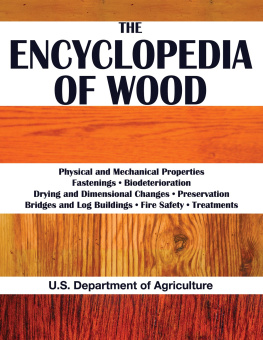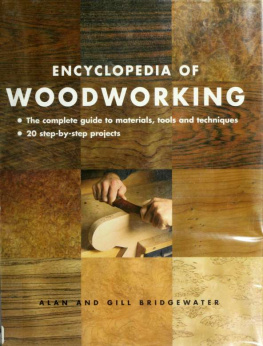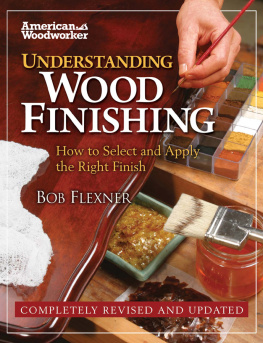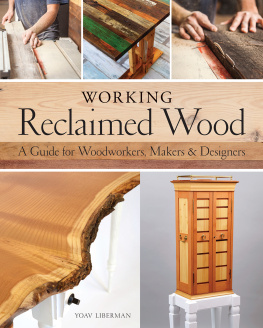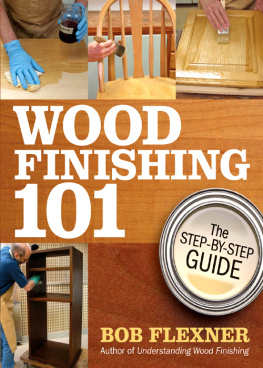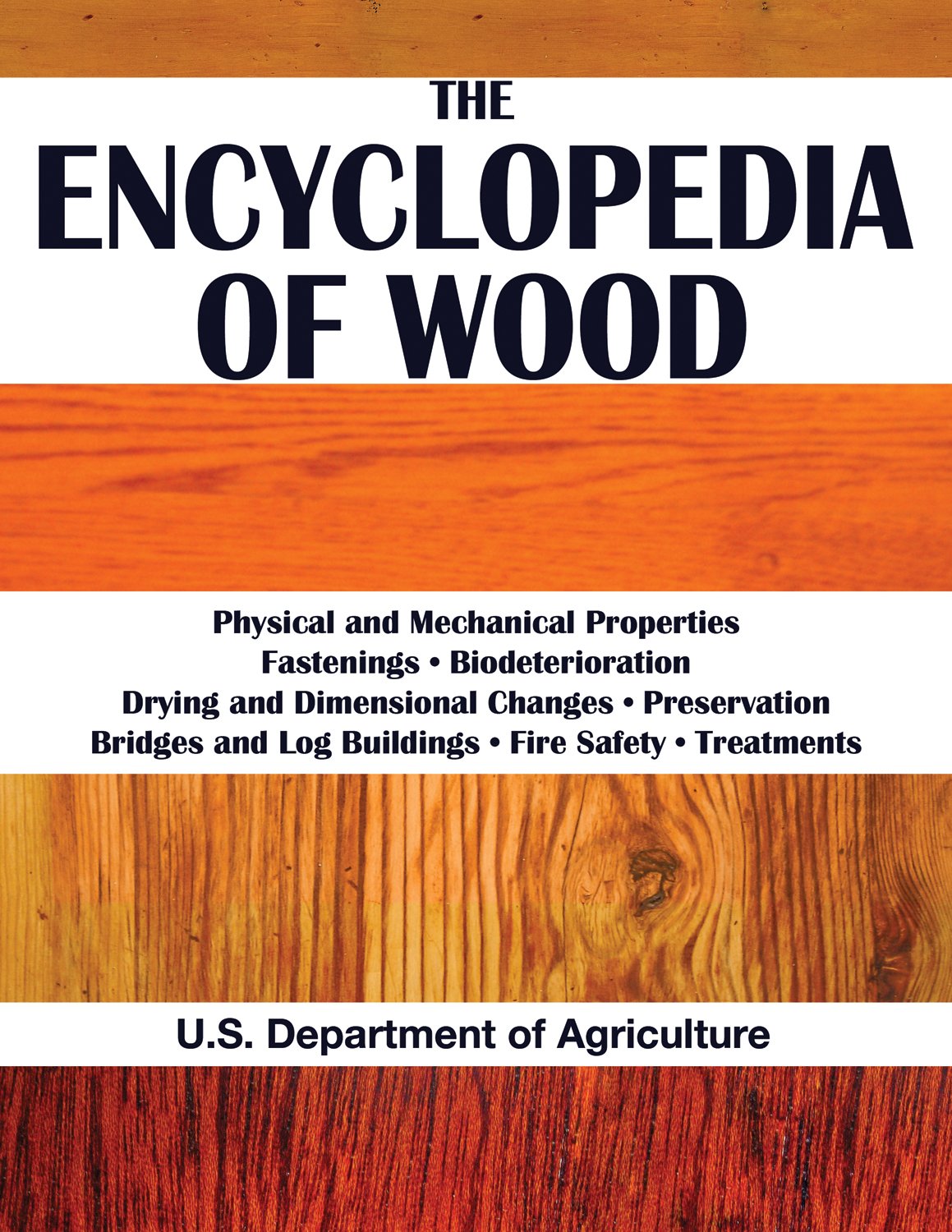Acknowledgments
We gratefully acknowledge the extraordinary effort of the following individuals in their review of the final draft of this entire volume. Their effort has substantially enhanced the clarity, consistency, and coverage of The Encyclopedia of Wood .
Donald Bender
Wood Materials & Engineering Laboratory
Washington State University
Pullman, Washington
Arthur Brauner
Forest Products Society
Madison, Wisconsin
Bradford Douglas
American Forest & Paper Association
Washington, DC
David Green
USDA Forest Service, Forest Products Laboratory
Madison, Wisconsin
Michael Hunt
Department of Forestry and Natural Resources
Purdue University
West Lafayette, Indiana
Thomas McLain
Department of Forest Products
Oregon State University
Corvallis, Oregon
Russell Moody
Madison, Wisconsin
Michael OHalloran
APAThe Engineered Wood Association
Tacoma, Washington
Erwin Schaffer
Sun City West, Arizona
Contributors to The Encyclopedia of Wood are indebted to the following individuals and organizations for their early technical review of chapter manuscripts.
Terry Amburgey
Forest Products Laboratory
Mississippi State University
Mississippi State, Mississippi
Jon Arno
Troy, Minnesota
B. Alan Bendtsen
Madison, Wisconsin
A. William Boehner
Trus Joist MacMillan
Boise, Idaho
R. Michael Caldwell
American Institute of Timber Construction
Englewood, Colorado
Donald Carr
NAHBNational Research Center
Upper Marlboro, Maryland
Richard
Caster
Weyerhaeuser Company
Tacoma, Washington
Kevin Cheung
Western Wood Products Association
Portland, Oregon
Stephen Clark
Northeastern Lumber Manufacturers Association
Cumberland Center, Maine
Richard Cook
National Casein Company
Santa Ana, California
William Crossman
Atlanta Wood Industries
Savannah, Georgia
Thomas Daniels
Energy Products of Idaho
Coeur DAlene, Idaho
Donald DeVisser
West Coast Lumber Inspection Bureau
Portland, Oregon
Bradford Douglas
American Forest and Paper Association
Washington, DC
Stan Elberg
National Oak Flooring Manufacturers Association
Memphis, Tennessee
Paul Foehlich
Southern Cypress Manufacturers Association
Pittsburgh, Pennsylvania
Barry Goodell
Forest Products Laboratory
University of Maine
Orono, Maine
Kevin Haile
HP&VA
Reston, Virginia
Daniel Hare
The Composite Panel Association
Gaithersburg, Maryland
R. Bruce Hoadley
Forestry Department
University of Massachusetts
Amherst, Massachusetts
David Hon
Department of Forest Resources
Clemson University
Clemson, South Carolina
Robert Hunt
Western Wood Products Association
Portland, Oregon
Lisa Johnson
Southern Pine Inspection Bureau
Pensacola, Florida
Tom Jones
Southern Pine Inspection Bureau
Pensacola, Florida
Charles Jourdain
California Redwood Association
Novato, California
John Kressbach
Gillette, New Jersey
Robert Kundrot
Nestle Resins Corporation
Springfield, Oregon
Steven Lawser
Wood Component Manufacturers Association
Marietta, Georgia
Phillip Line
American Forest & Paper Association
Washington, DC
Joseph Loferski
Brooks Forest Products Center
Blacksburg, Virginia
Maple Flooring Manufacturers Association
Northbrook, Illinois
Thomas McLain
Department of Forest Products
Oregon State University
Corvallis, Oregon
David McLean
Civil Engineering Department
Washington State University
Pullman, Washington
Rodney McPhee
Canadian Wood Council
Ottawa, Ontario, Canada
Michael Milota
Oregon State University
Corvallis, Oregon
Jeffrey Morrell
Department of Forest Products
Oregon State University
Corvallis, Oregon
National Hardwood Lumber Association
Memphis, Tennessee
Darrel Nicholas
Forest Products Laboratory
Mississippi State University
Mississippi State, Mississippi
Michael OHalloran
APAThe Engineered Wood Association
Tacoma, Washington
Perry Peralta
Department of Wood and Paper Science
North Carolina State University
Raleigh, North Carolina
David Plackett
Forintek Canada Corporation
Vancouver, British Columbia, Canada
David Pollock
Civil Engineering Department
Washington State University
Pullman, Washington
Redwood Inspection Service
Mill Valley, California
Alan Ross
Kop-Coat Inc.
Pittsburgh, Pennsylvania
Thomas Searles
American Lumber Standards Committee
Germantown, Maryland
James Shaw
Weyerhaeuser Company
Tacoma, Washington
Bradley Shelley
West Coast Lumber Inspection Bureau
Portland, Oregon
Ramsey Smith
Louisiana Forest Products Laboratory
Baton Rouge, Louisiana
William Smith
SUNY-ESF
Wood Products Engineering
Syracuse, New York
Edward Starostovic
PFS/TECO Corporations
Madison, Wisconsin
Louis Wagner
American Hardwood Association
Palatine, Illinois
Eugene Wengert
Department of Forestry
University of Wisconsin
Madison, Wisconsin
Michael Westfall
Red Cedar Shingle & Handsplit Shake Bureau
Bellevue, Washington
Borjen Yeh
APAThe Engineered Wood Association
Tacoma, Washington
Chapter 1
Characteristics and Availability of Commercially Important Woods
Regis B. Miller
T hroughout history, the unique characteristics and comparative abundance of wood have made it a natural material for homes and other structures, furniture, tools, vehicles, and decorative objects. Today, for the same reasons, wood is prized for a multitude of uses.
All wood is composed of cellulose, lignin, hemicelluloses, and minor amounts (5% to 10%) of extraneous materials contained in a cellular structure. Variations in the characteristics and volume of these components and differences in cellular structure make woods heavy or light, stiff or flexible, and hard or soft. The properties of a single species are relatively constant within limits; therefore, selection of wood by species alone may sometimes be adequate. However, to use wood to its best advantage and most effectively in engineering applications, specific characteristics or physical properties must be considered.
Historically, some species filled many purposes, while other less available or less desirable species served only one or two needs. For example, because white oak is tough, strong, and durable, it was highly prized for shipbuilding, bridges, cooperage, barn timbers, farm implements, railroad crossties, fence posts, and flooring. Woods such as black walnut and cherry were used primarily for furniture and cabinets. Hickory was manufactured into tough, hard, and resilient striking-tool handles, and black locust was prized for barn timbers. What the early builder or craftsman learned by trial and error became the basis for deciding which species were appropriate for a given use in terms of their characteristics. It was commonly accepted that wood from trees grown in certain locations under certain conditions was stronger, more durable, more easily worked with tools, or finer grained than wood from trees in other locations. Modern research on wood has substantiated that location and growth conditions do significantly affect wood properties.

